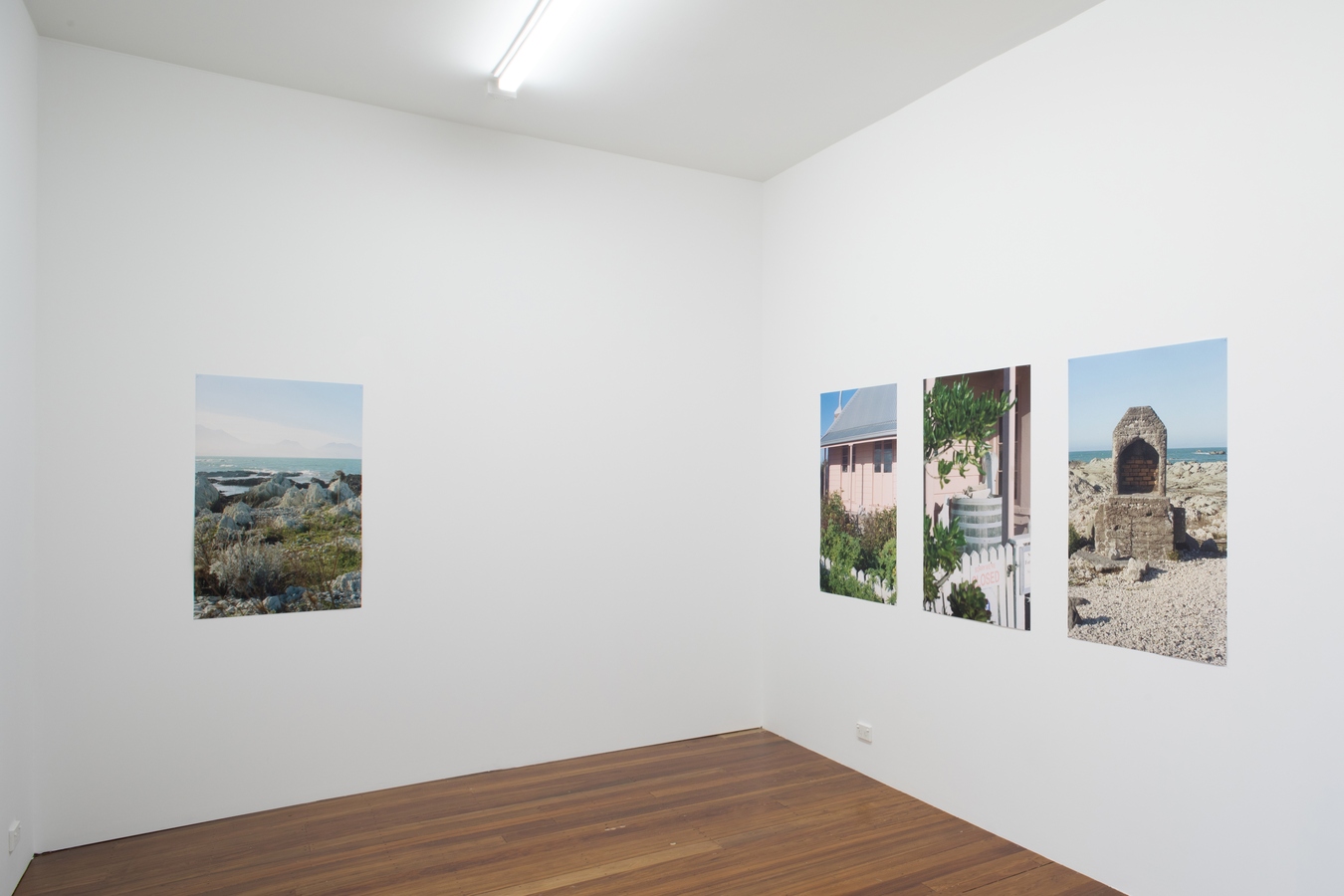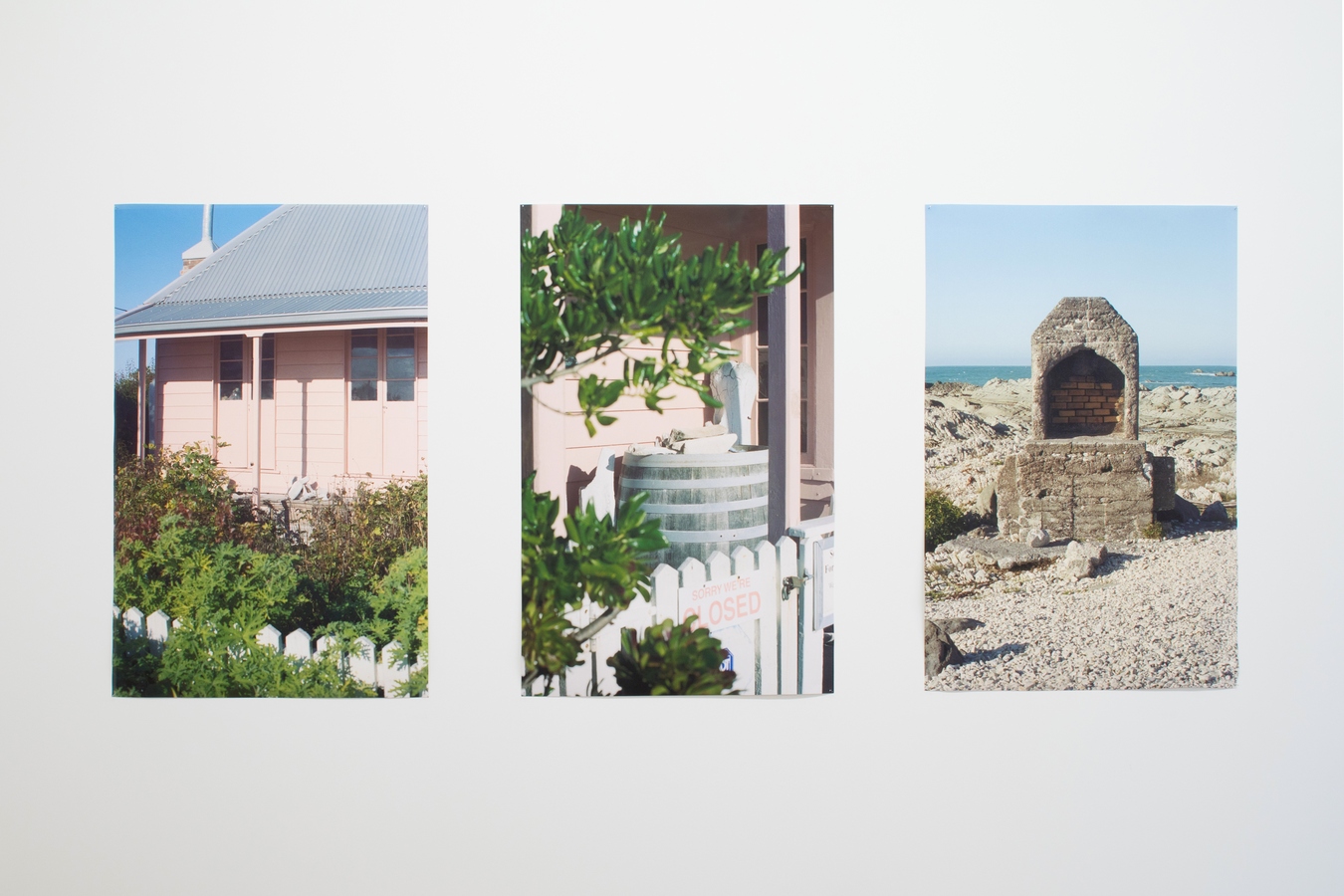Emily Parr
Surfacing
31 Jul — 19 Sep 2021
Surfacing
Emily Parr
Exhibition preview: Friday 30 July, 5:30pm (artist talk at 4:30pm)
Exhibition runs: 31 July –19 September 2021
It matters where you start. The first photo in this exhibition is of a group of friends swimming in Whāingaroa Harbour at the end of the day. They are on a research break, or a weekend away, or just a swim: the kind where you keep on talking, though sometimes someone is underwater for a bit, surfaces laughing and returns to the conversation from another angle. The photo was taken at the beginning of this year, and marks the beginning of this project, Surfacing.
Parr’s practice has consistently been orientated by the ocean. The artist is currently undertaking PhD study, a process which, in these early stages, is guided by narratives of whale migration. Earlier in the year Parr made a trip to Kaikōura to learn about the whales and former whaling station there; some of the images in the exhibition come from that time. Others are of Sāmoa and Tonga, where Emily’s paternal great-grandparents are from, and of Tauranga Moana where the other side of her family is from. The artist writes,
I went to meet the humpback whales, paikea, on their journey back to their birthing waters. As this part of the world settles into winter, they migrate north from Antarctica along the coastline of Te Wai Pounamu, crossing Te Moananui-a-Kiwa for the warmer waters of Vava’u. The whales I hold a growing affinity with have been making this journey since time beyond memory.
Alongside the recent photographs, two wall-based drawings reach further back in time. The first is a hoe parāoa (whalebone waka paddle), that was collected by Parr’s great-great-grandparents and later gifted to the Dominion Museum. The second drawing maps waterways in Parr’s whakapapa, alongside a toroa (albatross), paikea (humpback whale) and the Sāmoan ‘oli (a red, scented flower). The toroa holds a particular connection to Ngāi Te Rangi, Emily’s iwi, referenced in the words “He toroa whakakopa au nō runga i Kārewa, he pōtiki manawa ū nā Ngāi Te Rangi: I am a soaring albatross high above Kārewa, a stout-hearted child that belongs to Ngāi Te Rangi” (Ngāi Te Rangi, 2018). The arc of the toroa on wind, the deep slow movement of the whale beneath the ocean surface, the courses of water; these gestures also inform Parr’s research process.
Recalling the first time she encountered a whale, the artist writes,
Maybe it’s incorrect to say I saw a whale, rather, I heard it. There was no spectacle, no majestic breach—just a few whales coming up for air, like stones skipping with vast intervals.
In an extended process of research, when an idea or form finally breaks the surface, things can seem suddenly substantial, clear, euphoric. These images exist in acknowledgement of those times, and the necessity of oxygen, observation, remembering where and who you came from, in order to continue for the next leg.
--
Emily Parr (Ngāi Te Rangi, Moana, Pākehā) is an artist living in Tāmaki Makaurau. Her practice explores relationships between people, political frameworks, whenua and moana. Her recent Master’s research, on settler-indigenous relationships of Te Moananui-a-Kiwa, travels oceans and centuries, seeking stories in archives and waters on haerenga to three of her ancestral homelands, Tauranga Moana, Sāmoa and Tonga. Emily works mostly in moving image. Alongside of this she has been making film photographs over the past seven years. Emily was the recipient of the 2019 Iris Fisher Scholarship and 2016 Tāmaki Estuary Art Award. She holds a Bachelor of Fine Arts (Hons) from Elam School of Fine Arts, a Master of Visual Arts, and is currently working towards a PhD, both through Auckland University of Technology.
Audio
Surfacing essay written and read by Emily Parr


















